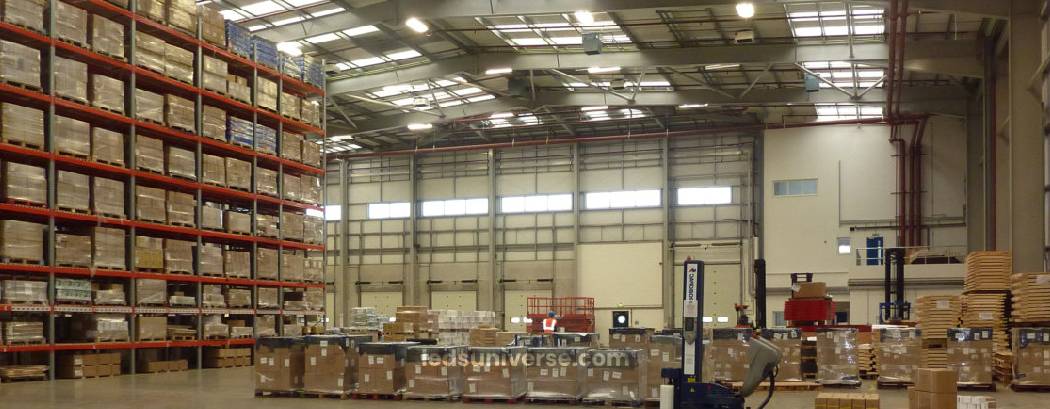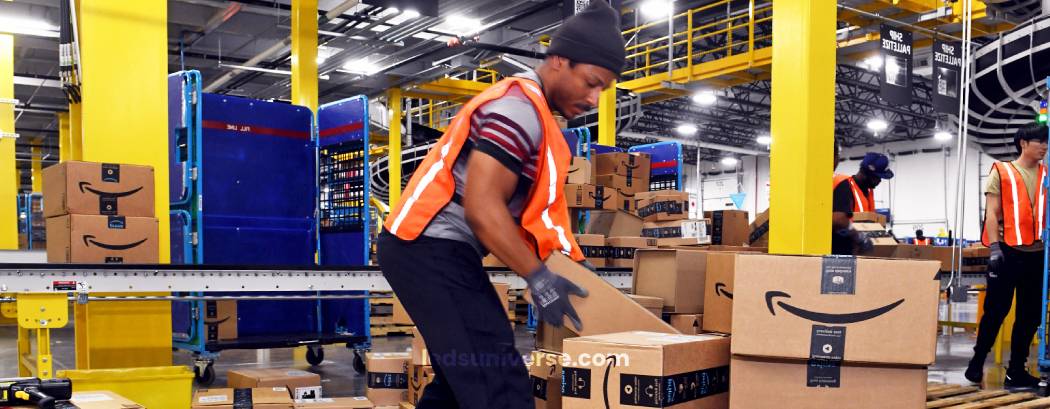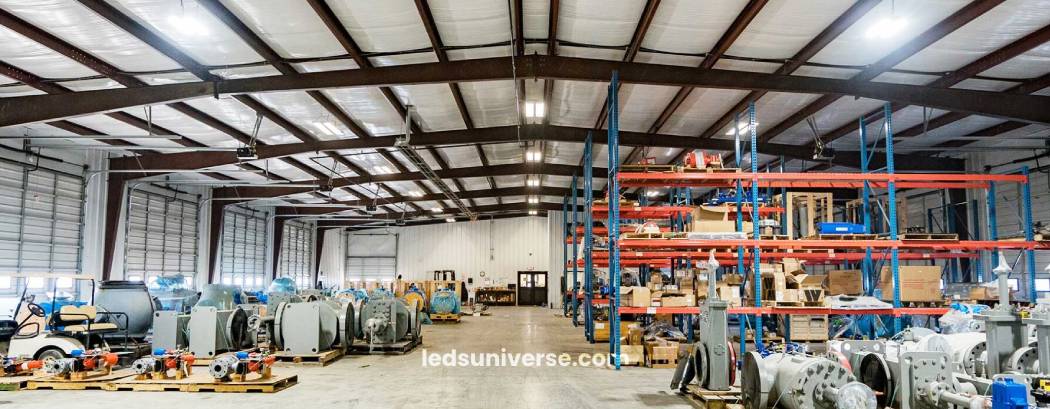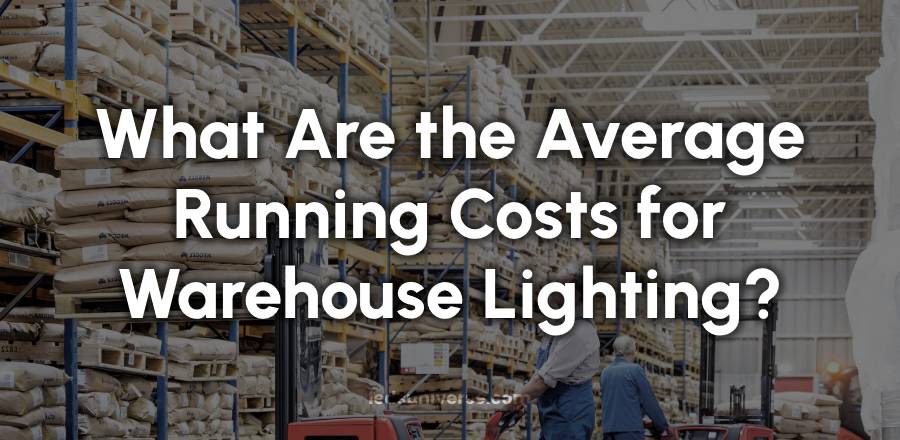Understanding the average running costs associated with warehouse lighting can help facility managers and owners make informed choices regarding their lighting systems. Various factors contribute to these costs, including the type of lighting used, energy consumption, maintenance requirements, and installation expenses. With rising energy costs and increasing pressure to adopt more sustainable practices, it’s vital to analyze these costs effectively.
Traditional lighting options, such as fluorescent and metal halide, often present lower initial costs but can lead to higher long-term expenses. In contrast, modern solutions like LED lighting may require a more substantial upfront investment but often provide considerable savings in energy and maintenance costs. This article explores the components of warehouse lighting running costs, provides a detailed breakdown of average costs, and outlines strategies for reducing expenses.
| Component | Details | Cost Implications |
|---|---|---|
| Energy Consumption | Wattage of lighting fixtures affects electricity consumption. Traditional fixtures like fluorescent lamps (32 watts) use more power than LEDs (15 watts). |
|
| Maintenance Costs | Regular upkeep is required for bulb replacements and general maintenance. LEDs have longer lifespans (15,000 to 100,000 hours) compared to traditional bulbs. |
|
| Installation Costs | Costs vary based on the complexity of the lighting system. Retrofitting is cheaper than complete overhauls. |
|
Table of Contents
ToggleComponents of Running Costs
The running costs of warehouse lighting comprise several components that can vary widely based on the choices made regarding lighting systems. Each component has a role in the overall financial impact on warehouse operations.

Energy Consumption
Energy consumption is one of the most significant contributors to running costs. The wattage of the lighting fixtures directly influences how much electricity is consumed. Traditional lighting options, like fluorescent and metal halide lamps, typically have higher wattage ratings than modern solutions such as LED lights. For instance, a typical fluorescent bulb consumes around 32 watts, whereas an LED equivalent may only use 15 watts to provide the same light output.
To put this into perspective, consider a warehouse that uses 100 fluorescent fixtures, each consuming 32 watts. This setup would draw a total of 3,200 watts per hour. If the warehouse operates these lights for 12 hours a day, the total daily energy consumption would be 38.4 kWh (3,200 watts / 1,000 * 12 hours). Assuming an average energy rate of $0.10 per kWh, the daily energy cost would be approximately $3.84. Over a month, the energy cost would rise to around $115.20, and over a year, it would amount to approximately $1,382.40.
In comparison, if the same warehouse opted for LED lights with a power consumption of only 15 watts per fixture, the total energy consumption would drop to 1,500 watts per hour. Operating these fixtures for the same 12 hours daily would result in a total daily consumption of 18 kWh (1,500 watts / 1,000 * 12 hours). At the same energy rate of $0.10 per kWh, the daily energy cost in this case would be around $1.80. Over a month, the energy cost would be approximately $54, leading to an annual expense of about $648. This comparison illustrates how modern lighting solutions can significantly reduce energy expenses.
Moreover, electricity prices can fluctuate based on local rates, demand, and supply. Understanding the average rate per kilowatt-hour (kWh) in a specific area can provide a clearer picture of energy expenses related to warehouse lighting. Warehouse managers should regularly check energy prices to make informed decisions regarding their lighting systems.
Maintenance Costs
Maintenance costs also play a significant role in running expenses. Over time, lighting fixtures require upkeep, including bulb replacements and general maintenance. Traditional lighting options generally have shorter lifespans compared to modern alternatives. For example, fluorescent and metal halide bulbs may need replacing every year or two, depending on usage, while LED lights can last anywhere from 15,000 to 100,000 hours. The frequency of replacements directly affects labor costs and the expenses related to purchasing new bulbs.
To quantify this, if the warehouse using fluorescent fixtures needed to replace bulbs once a year at an average cost of $10 per bulb, the annual expense would total $1,000 for the 100 fixtures. In contrast, if the warehouse switched to LED lights, with an average lifespan of 25,000 hours, replacements might only be necessary once every five years, reducing the annual maintenance expense to $200.
Beyond bulb replacement, maintenance also includes the cleaning and servicing of fixtures. Dust accumulation can diminish the performance of lighting fixtures, making them less effective. Regular cleaning and maintenance can extend the lifespan of the fixtures and improve energy efficiency. For example, investing an additional $300 per year in maintenance activities such as cleaning can further enhance performance and reliability. Establishing a maintenance schedule is therefore essential for minimizing long-term costs.
Installation Costs
Installation costs can vary significantly based on the complexity of the lighting system. A simple retrofit of existing fixtures may incur lower costs than a complete overhaul involving new fixtures, wiring, and controls. If a warehouse manager decides to switch from traditional lighting to a modern LED system, the initial installation may involve upgrading the electrical infrastructure to support the new technology.
For instance, retrofitting existing fixtures might cost around $5,000, while installing a brand new LED system could range from $15,000 to $30,000 depending on the size of the warehouse and the complexity of the installation. Moreover, if smart lighting systems are being implemented, which can optimize energy usage through automation, these systems may come with higher upfront costs. Smart lighting systems, such as those with occupancy sensors and daylight harvesting capabilities, can provide significant energy savings but may require a larger initial investment—typically ranging from $5,000 to $15,000. The long-term benefits, however, often outweigh these upfront costs.
Average Running Costs Breakdown
To understand the average running costs for warehouse lighting, one must consider the financial implications of different lighting options. Traditional lighting systems, such as fluorescent and metal halide fixtures, often have lower initial costs but can lead to higher long-term expenses. In contrast, investing in modern lighting solutions, like LEDs, may require a more substantial upfront investment but can yield considerable savings over time.

Energy Costs
For instance, consider a warehouse using 100 fluorescent fixtures, each consuming 32 watts. This setup would draw a total of 3,200 watts per hour. If the warehouse operates these lights for 12 hours a day, the total daily energy consumption would be 38.4 kWh (3,200 watts / 1,000 * 12 hours). Assuming an average energy rate of $0.10 per kWh, the daily energy cost would be approximately $3.84. Over a month, the energy cost would rise to around $115.20, and over a year, it would amount to approximately $1,382.40.
In comparison, if the same warehouse opted for LED lights with a power consumption of only 15 watts per fixture, the total energy consumption would drop to 1,500 watts per hour. Operating these fixtures for the same 12 hours daily would result in a total daily consumption of 18 kWh (1,500 watts / 1,000 * 12 hours). At the same energy rate of $0.10 per kWh, the daily energy cost in this case would be around $1.80. Over a month, the energy cost would be approximately $54, leading to an annual expense of about $648. This comparison illustrates how modern lighting solutions can significantly reduce energy expenses.
Maintenance Costs
Maintenance costs should also be taken into account when calculating average running costs. Traditional bulbs generally have shorter lifespans, leading to more frequent replacements. If the warehouse using fluorescent fixtures needed to replace bulbs once a year at an average cost of $10 per bulb, the annual expense would total $1,000 for the 100 fixtures. Conversely, if the warehouse switched to LED lights, with an average lifespan of 25,000 hours, replacements might only be necessary once every five years. This would reduce the annual maintenance expense to $200, creating significant savings.
Additionally, maintenance activities such as cleaning fixtures and checking electrical connections also contribute to running costs. Dust and grime can accumulate on lighting fixtures, diminishing their efficiency and brightness. Regular maintenance can prevent performance issues and extend the lifespan of the fixtures, further minimizing long-term expenses.
Installation Costs
When evaluating average running costs, installation expenses should not be overlooked. A straightforward retrofit of existing fixtures may be less expensive than a complete overhaul that involves new fixtures, wiring, and controls. For example, if retrofitting costs amount to $5,000 and upgrading to a smart lighting system adds another $5,000, the total initial investment might be $10,000. Although this is a significant upfront expense, the long-term savings in energy and maintenance costs can quickly offset this investment.
Considering the overall running costs for a warehouse lighting system over a five-year period can provide additional insight. A traditional fluorescent lighting setup with annual energy costs of approximately $16,588.80 (calculated at $1,382.40 per year) and annual maintenance costs of $1,000 would result in a total expense of $83,088.80 over five years. Conversely, a modern LED setup with annual energy costs of approximately $648 and annual maintenance costs of $200 would yield a total of $4,240 over the same period. This stark difference highlights the financial advantages of opting for modern lighting solutions.
Strategies for Reducing Running Costs
Reducing running costs associated with warehouse lighting involves various strategies that can lead to significant savings over time. One effective approach is transitioning to energy-efficient lighting solutions. While the upfront costs may be higher, the long-term savings on energy bills can justify the investment. LED lights, for example, use less energy than traditional options and have longer lifespans, leading to reduced maintenance and replacement costs.

Implementing Smart Lighting Systems
Implementing smart lighting systems is another effective strategy for reducing running costs. These advanced solutions enable warehouse managers to optimize energy usage through automation. Smart lighting can adjust brightness levels based on occupancy or natural light availability, ensuring that lights are only used when necessary. By employing motion sensors and daylight sensors, facilities can drastically cut energy consumption during periods of inactivity or when sufficient natural light is available.
For instance, if a warehouse can reduce its lighting energy consumption by 30% through smart technology, this would further decrease annual energy costs. Assuming an LED system initially costing $648 annually could save an additional 30%, the new annual cost would drop to about $453.60, providing a further incentive to adopt smart lighting solutions.
Regular Maintenance and Audits
Establishing a maintenance schedule can help ensure that lighting systems operate efficiently. Keeping fixtures clean and free of dust can enhance their performance and extend their lifespan. Moreover, timely replacements of burnt-out bulbs and repairs can prevent more extensive issues that may arise from neglect.
Conducting energy audits is another beneficial practice. By assessing the energy usage of warehouse lighting systems, facility managers can identify areas for improvement. Audits can highlight inefficiencies and inform decisions about upgrades or modifications to existing systems. Implementing energy-efficient practices can lead to enhanced performance and lower running costs.
Training staff to be aware of energy-saving practices can also contribute to reducing overall costs. Employees should be encouraged to turn off lights in areas that are not in use and to report any lighting issues promptly. Fostering a culture of energy awareness within the workforce can create a positive impact on overall energy consumption.
Leveraging Advanced Technologies
Leveraging advanced technologies such as lighting controls and building management systems can further enhance energy efficiency. Integrating lighting with other building systems can lead to more effective energy management. For instance, a building management system can coordinate heating, cooling, and lighting, optimizing overall energy use throughout the facility.
Using advanced lighting controls allows for customizable lighting schedules, enabling warehouses to adapt to varying operational needs. These systems can help ensure that lights are only on when needed, leading to significant reductions in energy costs.
Exploring Financial Incentives
Exploring financial incentives for upgrading lighting systems can also provide additional motivation for investment. Many utility companies offer rebates for installing energy-efficient lighting solutions. Investigating local, state, and federal programs that promote energy efficiency can help warehouse managers offset initial installation costs and make modern lighting technologies more accessible.
Additionally, tax incentives for energy-efficient upgrades may further reduce financial burdens. Understanding available incentives can facilitate a more strategic investment in warehouse lighting systems and contribute to a faster return on investment.
Long-term Benefits of Energy-efficient Lighting
While the focus is often on immediate running costs, the long-term benefits of investing in energy-efficient lighting solutions can be significant. Lower energy and maintenance costs improve the overall profitability of warehouse operations. Furthermore, enhanced lighting quality can contribute to improved employee morale, safety, and productivity. Adequate lighting reduces the risk of accidents and improves visibility, leading to a safer working environment.
Moreover, energy-efficient lighting options can enhance the quality of work performed in the warehouse. Well-lit environments can improve accuracy in picking and packing processes, reducing errors and increasing overall efficiency. Employees are likely to perform better in a well-lit space, leading to increased productivity and, ultimately, improved profit margins.
Environmental Impact
The transition to energy-efficient lighting also supports environmental sustainability efforts. By reducing energy consumption, warehouses can decrease their carbon footprint, contributing to a more sustainable future. Many companies today recognize the importance of sustainability in their operations and strive to minimize their environmental impact.
Embracing energy-efficient lighting not only helps organizations save money but also aligns with corporate social responsibility initiatives. Customers and clients increasingly favor businesses that prioritize sustainability, and implementing green practices can enhance a company’s reputation and appeal.
Final Thoughts
Managing warehouse lighting running costs is a multifaceted challenge that requires careful consideration of various components, including energy consumption, maintenance expenses, and installation costs. By understanding these factors and exploring different lighting options, warehouse managers can make informed decisions that lead to long-term savings.
Transitioning to energy-efficient lighting solutions, implementing smart lighting systems, and establishing regular maintenance practices are effective strategies for reducing running costs. Conducting energy audits and training employees to prioritize energy-saving practices can further enhance efficiency and reduce expenses. Additionally, exploring financial incentives for upgrades can make modern lighting technologies more accessible.
Investing in energy-efficient lighting is not merely a financial decision; it encompasses broader considerations, including employee safety, operational efficiency, and environmental sustainability. As warehouses continue to evolve in an ever-changing economic landscape, making informed choices regarding lighting systems can lead to significant benefits for both operations and the environment. Ultimately, the effort to manage and reduce running costs associated with warehouse lighting can enhance operational efficiency and contribute to a sustainable future.
